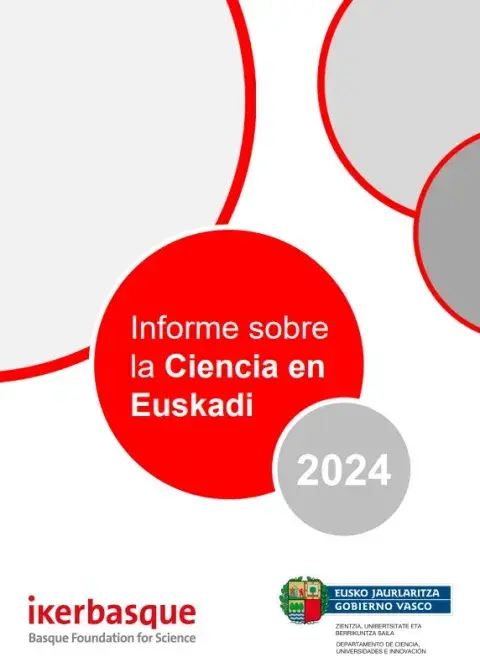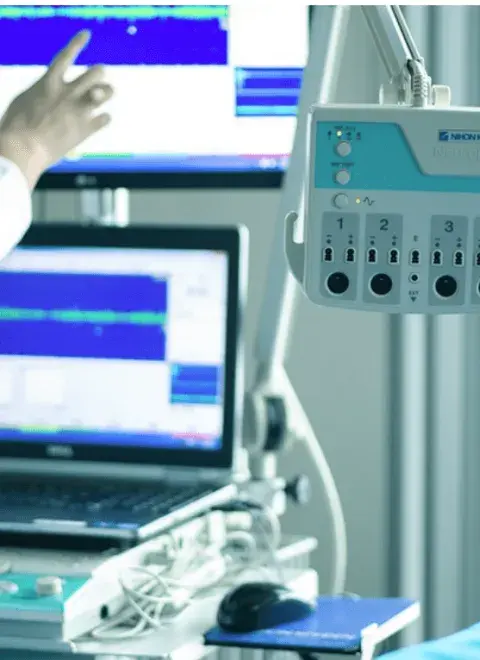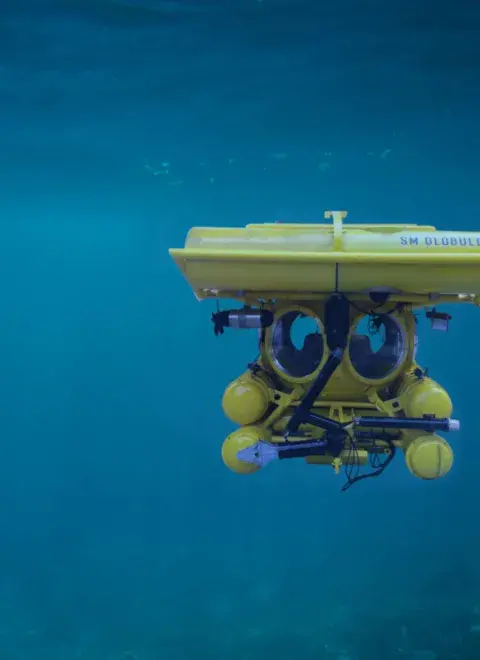
Post in 3 languages
Today we celebrate the European Day of Languages, 26 September. This day has been jointly organised by the Council of Europe and the European Commission, since 2001, confirming the existence of many languages in a plural Europe.
The aim is multiple!
- raise awareness of the wide variety of languages in Europe
- promote cultural heritage & linguistic diversity
- encourage people of all ages to learn languages
- promote translation, interpretation, other language-related professions.
Academic globalization and internationalization of scientific knowledge force universities to navigate between two forces: global competitiveness and innovation on the one hand, and local attractiveness and diversity on the other hand (Yanaprasart, 2020), creating a conflict between internationalization and contextualization (Gajo et al., 2020). What do universities do to deal with this dilemma? How to tackle the plurality without endangering linguistic heritage?
Amongst the several multilingual practices we witness in Euskampus-Bordeaux community with a linguistically diverse working environment we sometimes observe how different languages are used in the cross-borders area. We have witnessed a flexible interaction where most often three languages are used, all local languages. Academic mobility and the increasing need to integrate international research teams have made plurilingualism a reality (Melo-Pfeifer, 2020), and efforts should be made to maintain that rainbow of languages.
The participants offer the message in the language of their choice and receptive multilingualism takes place where they answer in an alternative language. This proves the fact that there is some basic comprehension of languages but also difficulty to utter answers in the same language so the participants choose to answer in their native language but accept being addressed in other of the three local languages.
Moreover, the multilinguals offer improvised translations when there is a gap in understanding proving that it is possible to witness a diverse multilingual reality without opting always for English as a lingua franca. This leads us to think that language should be understood as a communication tool as well a construction tool (Gajo et al., 2020) and realize that sometimes it is possible to leave a window open for spontaneous interaction in multiple languages when the genuine aim of the individual is to make oneself understood.
They express themselves in their respective identities and cooperate in pursuit of the good understanding of the group, producing good results of social harmony accepting their other languages. Language anxiety is diminished due to the freedom they experience offering their message in their language of choice and accepting the others’ exchange in their respective languages.
The activity is carried out in a friendly, even amusing tone, making jokes about the multicolor palette of languages and cultures. They even claim to maintain all the identities when producing the final deliverable to the rest of the groups. Moreover, using a lingua franca that is different from one’s own language may lead to a lack of emotional involvement (Lüdi, 2015). How much of our emotions is lost when using a L2, or L3? Is it always necessary to miss that important part of the communication process? Is not emotion a vital issue in social interaction?
We would like to show how a multilingual working environment could be possible in cross-border collaborations, as an alternative to one-language-only policies. Furthermore, in some specific cases, the use of a minority language as Basque reaffirms its place within a wider context in relation with two majority languages as Spanish and French, as well as in competition with a lingua franca as English. Lüdi (2015: 213) underlines that ‘the respect for linguistic diversity is, therefore, a conditio sine qua non for meeting the increasing challenges of the world’s superdiversity’.
The multilingual identity of the group is constructed, opening doors for tolerance towards multilingual practices and multiculturalism, enabling individuals to express their identities without invading the others’ identities (Etxebarria, 2018). However, of course, plurilanguaging also shows another side of the coin with certain disadvantages, such as the use of a multilingual approach giving rise to communication problems, possibly slowing down working processes (Lüdi, 2015). And this is where our effort should be highlighted, that is, conscious as we are of the impact in cost, time consuming and language conflict, we are certain that the effort is worth it.
This is just an example of how linguistic diversity can be approached and managed in a successful way, but there are surely others to identify and try. Research should go on in pursuit of a plural Europe where all their languages coexist in a friendly way.
To celebrate the European Day of Languages, the European Commission is organizing two virtual conferences - on 26 September.
Check out what is happening in your country!
Text adapted from research results carried out and soon to be published by Karin van der Worp and Itxaso Etxebarria Lekanda.
EUSK
Gaur, irailak 26, Hizkuntzen Europako Eguna da. Egun hori antolatu dute elkarrekin 2001az geroztik Europako Kontseiluak eta Europako Batzordeak, eta Europa askotarikoan hizkuntza ugari daudela berresten dute.
Era askotako helburuak ditu!
- Europako hizkuntza aniztasun zabalari buruzko kontzientzia areagotzen du.
- Ondare kulturala eta hizkuntza aniztasuna sustatzen ditu.
- Adin guztietako jendea bultzatzen du hizkuntzak ikastera.
- Itzulpengintza, interpretazioa eta hizkuntzekin lotutako beste lanbide batzuk sustatzen ditu.
Globalizazio akademikoak eta ezagutza zientifikoaren nazioartekotzeak bi indarren artean nabigatzera behartzen dituzte unibertsitateak: batetik, lehiakortasun globala eta berrikuntza, eta, bestetik, tokiko erakargarritasuna eta aniztasuna (Yanaprasart, 2020); hori horrela, nazioartekotzearen eta testuinguruaren jartzearen arteko gatazka sortzen da (Gajo et al., 2020). Zer egiten dute unibertsitateek dilema hori konpontzeko? Nola heldu aniztasunari ondare linguistikoa arriskuan jarri gabe?
Euskampus-Bordele komunitatean lekuko garen praktika eleaniztunen artean, askotariko hizkuntzatako lan ingurunea izanik, batzuetan ikusten dugu hizkuntza desberdinak erabiltzen direla eremu mugakidean. Ikusi dugu elkarrekintza malgu bat egiten dela, eta elkarreragin horretan, gehienetan hiru hizkuntza erabiltzen dira, guztiak ere tokiko hizkuntzak. Mugikortasun akademikoak eta nazioarteko ikertaldeak integratzeko gero eta premia handiagoak eleaniztasuna errealitate bihurtu dute (Melo-Pfeifer, 2020), eta hizkuntzen ostadar horri eusteko ahaleginak egin beharko lirateke.
Parte hartzaileek aukeratzen duten hizkuntzan ematen dute mezua, eleaniztasun harbera gauzatzen da eta hizkuntza alternatibo batean erantzuten dute. Horrek frogatzen du hizkuntzak oinarrian ulertzen direla, baina, halaber, hizkuntza berean erantzuteko zailtasunak daudela. Beraz, parte hartzaileek beren jatorrizko hizkuntzan erantzutea aukeratzen dute, baina onartu egiten dute beraiei tokiko hiru hizkuntzetako beste batzuetan hitz egitea.
Gainera, eleaniztunek itzulpen inprobisatuak egiten dituzte ulermenean hutsunerik badago, eta horrek erakusten du posible dela askotariko errealitate eleaniztun baten lekuko izatea, ingelesa lingua franca gisa aukeratu gabe beti. Horrek pentsarazten digu komunikazio tresnatzat eta eraikuntza tresnatzat ulertu behar dela hizkuntza (Gajo et al., 2020), eta jabetzen gara batzuetan leiho bat irekita utz daitekeela bat-bateko elkarrekintzarako askotariko hizkuntzetan, banakoaren benetako helburua norbere burua ulertaraztea denean.
Bakoitzak bere identitatean adierazten du bere burua, eta taldeak ondo ulertzea lortzeko elkarlanean aritzen da; horrela, gizarte harmonia ona lortzen da, beren beste hizkuntzak onartuz. Hizkuntzarekiko antsietatea murriztu egiten da, beren mezua beraiek aukeratutako hizkuntzan eman eta besteek beren hizkuntzetara eginiko trukea onartzen dutelako. Jarduera tonu atseginean, are gehiago, dibertigarrian egiten da, hizkuntzen eta kulturen paleta koloreaniztunari buruzko bromak eginez. Identitate guztiei eustea ere eskatzen dute, gainerako taldeei azken entrega egiten dietenean. Gainera, norberaren hizkuntza ez den lingua franca bat erabiltzeak inplikazio emozionalik ez izatea eragin dezake (Lüdi, 2015). Gure zenbat emozio galtzen dira 2H edo 3H bat erabiltzen denean? Komunikazio prozesuaren zati garrantzitsu hori galdu behar da beti? Ez da emozioa nahitaezko alderdia elkarreragin sozialean?
Erakutsi nahi dugu nola izan daitekeen posible lan ingurune eleaniztun bat mugaz gaindiko lankidetzetan, hizkuntza bakarreko politiken alternatiba gisa.
Bestalde, kasu zehatz batzuetan, hizkuntza gutxitu bat erabiltzeak, euskara kasurako, bere lekua berresten du testuinguru handiago batean, gehiengoaren bi hizkuntzei (gaztelania eta frantsesa) dagokienez, baita lingua franca batekiko (ingelesa) norgehiagokan ere. Lüdik (2015: 213) honako hau azpimarratzen du: ‘hizkuntza aniztasunarekiko errespetua, beraz, conditio sine qua non da munduaren superaniztasunaren erronka gero eta handiagoei aurre egiteko’. Taldearen identitate eleaniztuna eraikitzen da, praktika eleaniztunekiko eta kultura aniztasunarekiko tolerantziarako ateak irekiz, norbanakoei beren identitateak adierazteko aukera emanez besteen identitateak inbaditu gabe (Etxebarria, 2018).
Nolanahi ere, noski, askotariko hizkuntzak erabiltzeak txanponaren beste aldea ere erakusten du, zenbait alde txarrekin, hala nola ikuspegi eleaniztuna erabiltzeagatik komunikazio arazoak sortzea eta lan prozesuak moteldu ahal izatea (Lüdi, 2015). Eta hor azpimarratu behar da gure ahalegina, hau da, kostuan, denboraren kontsumoan eta hizkuntza gatazkan duen eraginaren jakitun izanik, ziur gaudela ahaleginak merezi duela.
Hizkuntza aniztasunari arrakastaz ekiteko eta kudeatzeko moduaren adibide bat baino ez da hau, baina ziur asko badaude beste batzuk identifikatzeko eta probatzeko. Ikerketak egiten jarraitu beharko lirateke Europa plural bat lortzeko, non hizkuntza guztiak batera existituko diren era adiskidetsuan.
Hizkuntzen Europako Eguna ospatzeko, Europako Batzordeak bi biltzar birtual antolatu ditu irailaren 26an.
Batu online! Begiratu zer ari den gertatzen zure herrialdean!
Karin van der Worpek eta Itxaso Etxebarria Lekandak egin eta laster argitaratuko duten ikerketaren emaitzetatik egokitu da testua.
ESP
Hoy, 26 de septiembre, celebramos el Día Europeo de las Lenguas.
Este día lo organizan de manera conjunta el Consejo de Europa y la Comisión Europea desde 2001, confirmando la existencia de muchas lenguas en una Europa plural.
¡El objetivo es múltiple!
- dar a conocer la gran variedad de lenguas que hay en Europa
- promover el patrimonio cultural y la diversidad lingüística
- animar a personas de todas las edades a aprender idiomas
- promover la traducción, la interpretación y otras profesiones relacionadas con las lenguas
La globalización académica y la internacionalización del conocimiento científico obligan a las universidades a navegar entre dos fuerzas. Por un lado, la competitividad global y la innovación. Y por otro lado, el atractivo local y la diversidad (Yanaprasart, 2020), creando un conflicto entre internacionalización y contextualización (Gajo et al., 2020). ¿Qué hacen las universidades ante este dilema? ¿Cómo abordar la pluralidad sin poner en peligro el patrimonio lingüístico?
Entre las diversas prácticas multilingües que presenciamos en la comunidad Euskampus Bordeaux, con un entorno de trabajo lingüísticamente diverso, a menudo observamos cómo se utilizan diferentes lenguas en la zona transfronteriza. Hemos sido testigos de una interacción flexible en la que la mayoría de veces se utilizan tres idiomas, todos ellos locales. La movilidad académica y la creciente necesidad de integrar equipos de investigación internacionales han convertido el plurilingüismo en una realidad (Melo-Pfeifer, 2020), y hay que esforzarse por mantener ese amplio abanico de lenguas.
Los participantes transmiten el mensaje en el idioma que eligen y se produce un multilingüismo receptivo en el que responden en un idioma diferente. Esto demuestra que existe cierta comprensión básica de los idiomas, pero también dificultad para dar respuestas en el mismo idioma, por lo que los participantes optan por responder en su lengua materna, pero aceptan que se les hable en otra de las tres lenguas locales.
Además, los multilingües ofrecen traducciones improvisadas cuando hay una falta de comprensión, lo que demuestra que es posible asistir a una realidad multilingüe diversa sin optar siempre por el inglés como lingua franca. Esto nos lleva a pensar que la lengua debe entenderse como una herramienta de comunicación y también de construcción (Gajo et al., 2020) y a darnos cuenta de que a veces es posible dejar una ventana abierta a la interacción espontánea en varias lenguas cuando el verdadero objetivo del individuo es hacerse entender.
Se expresan en sus respectivas identidades y cooperan a favor del buen entendimiento del grupo, con lo que consiguen buenos resultados de armonía social aceptando sus otras lenguas. La ansiedad lingüística disminuye gracias a la libertad que experimentan al transmitir su mensaje en el idioma que eligen y aceptan el intercambio de los demás en sus respectivas lenguas. La actividad se desarrolla en un tono amable, incluso divertido, haciendo bromas sobre la paleta multicolor de idiomas y culturas. La comunidad llega hasta asegurarse de mantener todas las identidades a la hora de presentar el entregable final al resto de grupos. Además, utilizar una lengua franca diferente al propio idioma puede conllevar una falta de implicación emocional (Lüdi, 2015). ¿Cuántas emociones se pierden al utilizar una segunda o tercera lengua? ¿Es siempre necesario perder esa parte tan importante del proceso de comunicación? ¿No es la emoción una cuestión vital en la interacción social?
Queremos mostrar cómo sería posible un entorno de trabajo multilingüe en las colaboraciones transfronterizas, como alternativa a las políticas de un solo idioma.
Además, en algunos casos concretos, el uso de una lengua minoritaria como el euskera refuerza su lugar dentro de un contexto más amplio respecto a dos lenguas mayoritarias como son el español y el francés, junto a la competencia de una lengua franca como el inglés. Lüdi (2015: 213) subraya que el respeto de la diversidad lingüística es, por tanto, una conditio sine qua non para hacer frente a los crecientes desafíos de la superdiversidad mundial. La identidad multilingüe del grupo se construye abriendo la puerta a la tolerancia de prácticas multilingües y la multiculturalidad, permitiendo a los individuos expresar sus identidades sin invadir la de los demás (Etxebarria, 2018).
Sin embargo, es evidente que el plurilingüismo también muestra la otra cara de la moneda con ciertas desventajas, como el uso de un enfoque multilingüe que ocasiona problemas de comunicación, lo que posiblemente ralentiza los procesos de trabajo (Lüdi, 2015). Y es aquí donde hay que destacar nuestro esfuerzo. Aun siendo conscientes del impacto en coste, tiempo y conflicto lingüístico, estamos seguros de que el esfuerzo merece la pena.
Este es solo un ejemplo de cómo puede enfocarse y gestionarse con éxito la diversidad lingüística, aunque seguramente hay otros por identificar y probar. Se ha de seguir investigando para lograr una Europa plural en la que todas sus lenguas convivan de manera cordial.
Para celebrar el Día Europeo de las Lenguas, la Comisión Europea organiza dos conferencias virtuales el 26 de septiembre. ¡Inscríbete en línea!
¡Infórmate sobre lo que pasa en tu país!
Texto adaptado a partir de los resultados de una investigación realizada por Karin van der Worp e Itxaso Etxebarria Lekanda que se publicará en breve.
REFERENCES
- Etxebarria Lekanda, I. (2018) Multilingual and Multicultural University-Work Environment: Focus on New Aquitaine and the Basque Country. Retrieved from: https://euskampus.eus/es/blog/multilingual-and-multicultural-university-work-environment-focus-on-new-aquitaine-and-the-basque-country (date of access 21/04/2023)
- Gajo L. and Berthoud A.C. (2020) Issues of multilingualism for scientific knowledge: Practices for assessing research projects in terms of linguistic diversity. European Journal of Higher Education 10 (3), 294–307. DOI: 10.1080/21568235.2020.1777451
- Lüdi, G. (2015) Monolingualism and multilingualism in the construction and dissemination of scientific knowledge. The Multilingual Challenge. Interdisciplinary Perspectives, 213–238.
- Melo-Pfeifer, S. (2020) Is it just ‘black’ or ‘white’? Multilingual collaborative research seen through the practices of an international research team. European Journal of Higher Education 10 (3), 308–324. DOI: 10.1080/21568235.2020.1777447

HARPIDETU NEWSKAMPUS-EAN
eta gure azken berriak posta elektronikoz jasoko dituzu



